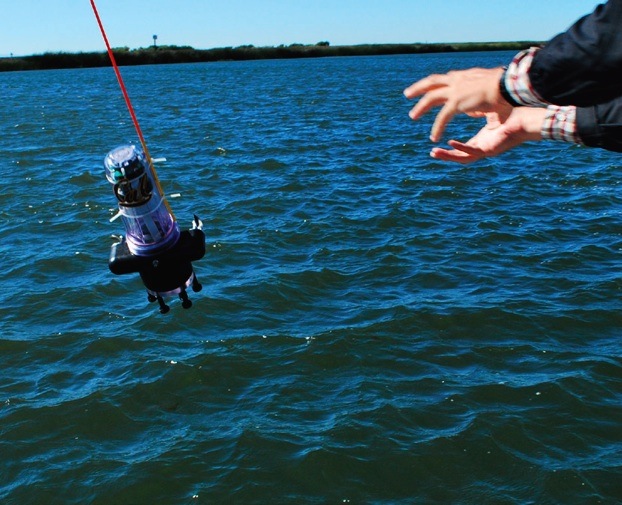
GPS Robot Swarm Swims California Rivers

Swarms of robots equipped with a sensors and GPS units are swimming in California rivers measuring water flow, salinty levels and pollution.
At the University of California, Berkeley, a group of 100 robots was released into the Sacramento River near Walnut Grove, Calif. The project, called the Floating Sensor Network, will, the designers hope, change the way water quality and flows are monitored in the Sacramento-San Joaquin river system. About two thirds of California's fresh water is in that system, supplying some two-thirds of the state's population with drinking and irrigation. The initiative is led by associate professor Alexandre Bayen at the Center for Information Technology Research in the Interest of Society (CITRIS).
The robots each have a sensor to test the salinity of the water and a GPS unit from a smartphone. Some have propellers so they can maneuver around obstacles and reach specific destinations. They even have Android phones in them and tweet. (Their handle is @fsnandroid61).
PHOTOS: Lions Captured In The Wild By 'BeetleCams'
Right now water monitoring is done with stationary sensors. Those are fine if one wants to know what pollutants or flow is like at a single point, but they don't say as much about how a plume of some contaminant is shaped -- for instance, if it is more concentrated towards the center of a channel or near the banks.
To get around this, the researchers designed robots that can either float with the current or propel themselves along in the water.
Before cell networks and GPS became ubiquitous, free-floating robots would have been chancy. Finding them would have been a project in itself. Now they can be tracked and send data in real time. The sensors without propellers will be for passive measurements, while those with them can travel to specific areas to study. The low cost of the sensor robots also means it's possible to deploy dozens at a time.
Sign up for the Live Science daily newsletter now
Get the world’s most fascinating discoveries delivered straight to your inbox.
Salinity is just one of the issues in the Sacramento river basin, which includes the San Joaquin delta and eventually empties into Suisun Bay, which leads to San Pablo Bay and the Pacific. But the robots could be fitted with sensors to look for other chemicals as well.
BLOG: Submarine Robots Lean Teamwork
Another big plus for the robots is when a disaster such as a levee breach happens. The stationary sensors are not likely to be in the place where a problem occurs, but the mobile robots can be dropped into place and transmit the water flow data -- along with information about any contaminants.
This story was provided by Discovery News.










